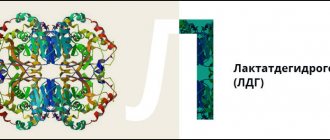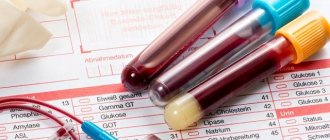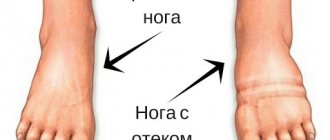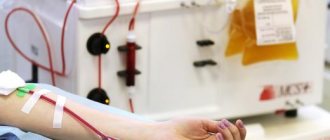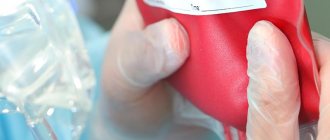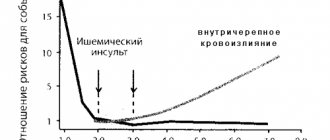Indications for testing
Blood is one of the most informative resources of the human body. By sending it for laboratory testing, the vast majority of diseases can be diagnosed with high accuracy. Clinical analysis contains many indicators, each of which reflects a specific process and function and serves as an important diagnostic criterion. However, despite the abundance of examinations, the most common and in demand at the MedArt clinic is a general blood test (ESR).
Erythrocyte sedimentation rate is the most important indicator, often confirming the presence of inflammation or other pathology (in the acute and latent stages). The mechanism of this analysis is quite simple, so you don’t need to spend several days to get the result. Red blood cells are much heavier than plasma and other cellular elements, and therefore, by placing blood in a vertically placed test tube, after a certain period of time a specific sediment will form at the bottom of the container, and a translucent liquid will appear at the top.
This is a completely natural phenomenon that occurs as a result of gravity. Red blood cells can stick together, forming entire colonies that settle to the bottom much faster than individual elements. This is due to the larger mass, which may indicate a problem.
Characteristics of the study
ESR is an indicator of the rate of separation of blood in a test tube with an added anticoagulant into 2 layers: upper (transparent plasma) and lower (settled red blood cells). The erythrocyte sedimentation rate is estimated by the height of the formed plasma layer in mm per 1 hour. The specific gravity of erythrocytes is higher than the specific gravity of plasma, therefore, in the presence of an anticoagulant, under the influence of gravity, erythrocytes settle to the bottom. The rate at which erythrocyte sedimentation occurs is mainly determined by the degree of their aggregation, that is, their ability to stick together.
The aggregation of erythrocytes mainly depends on their electrical properties and the protein composition of the blood plasma. Normally, red blood cells carry a negative charge (Z-potential of red blood cells), which is caused by charged sialic acid groups on the erythrocyte membrane, which contributes to their mutual repulsion and maintenance of red blood cells in a suspended state. The degree of erythrocyte aggregation (and therefore ESR) increases with increasing concentration of acute phase proteins (fibrinogen, C-reactive protein, haptoglobin, alpha-1 antitrypsin, ceruloplasmin, immunoglobulins, etc.). On the contrary, ESR decreases with increasing albumin concentration. Other factors also influence the Z-potential of erythrocytes: plasma pH (acidosis reduces ESR, alkalosis increases), ionic charge of plasma, lipids, blood viscosity, the presence of anti-erythrocyte antibodies. The number, shape and size of red blood cells also affect ESR. A decrease in the number of red blood cells (anemia) in the blood leads to an acceleration of ESR, and, on the contrary, an increase in the number of red blood cells slows down the sedimentation rate.
In acute inflammatory and infectious processes, an increase in ESR is observed 24 hours after an increase in temperature and an increase in the number of leukocytes. The ESR indicator varies depending on many physiological and pathological factors. ESR rates in women are slightly higher than in men. Changes in the protein composition of the blood during pregnancy lead to an increase in ESR during this period. The values may fluctuate during the day; the maximum level is observed during the daytime.
Measuring ESR should be considered a screening test that is not specific for any disease. Typically, an ESR test is prescribed along with a general blood test.
How to prepare for the test
ESR is included in the list of standard indicators that are displayed in all blood tests (general and clinical). However, special attention is paid to it in the following situations:
- Diagnosis confirmation
- Preventive examination
- Evaluation of the effectiveness of prescribed treatment
- Infectious and inflammatory pathologies
- Autoimmune disorders
- Tumors (malignant and benign) of any location
Many pathologies of internal organs are asymptomatic, and often identifying an ESR deviation from the norm becomes a reason to begin a more detailed diagnosis, thanks to which it is possible to identify the problem in the early stages and begin effective treatment. Most often, after any abnormalities are found, an additional biochemical analysis is prescribed, which allows a more detailed study of the bloodstream.
How to reduce ESR in the blood?
The doctor will tell you in detail about ways to reduce this indicator with the help of medications after the study. He will prescribe a treatment regimen once the diagnosis has been made. It is strictly not recommended to take medications on your own. You can try to reduce it with folk remedies, which are mainly aimed at restoring normal function of the immune system , as well as cleansing the blood. Effective folk remedies can be considered herbal decoctions, teas with raspberries and lemon, beet juice, etc. How many times a day to take these remedies, how much you need to drink, you should find out from a specialist.
How the research is carried out
The accuracy of this diagnostic method depends on many nuances: proper preparation for the test, the professionalism of the laboratory worker and the quality of the reagents. Subject to these conditions, you can guarantee the most reliable result. And if the person donating blood cannot influence the last 2 points, then the preparatory stage completely depends on him. Despite the fact that in this case no special and complex preparation is required, there are a number of mandatory general rules that are strongly recommended to be followed.
First of all, 1 day before the test, you must stop drinking alcoholic beverages, and also refrain from eating for 4-5 hours. Only drinking plain water is allowed. It is also recommended to quit smoking an hour before the test. Secondly, if the patient takes (on an ongoing basis or only at the moment) any medications, then the doctor must be informed about this in advance. Some medications can distort the results, which is why their use may be stopped and reinstated after donating blood. Thirdly, on the eve of the procedure you should not visit sports or gyms. You should also refrain from intense physical activity and avoid emotional stress.
If you doubt anything, just call us at this number +375(29) 666-30-96 or make an appointment with a doctor using our online form.
False-positive ESR tests
In medicine there is also the concept of a false positive analysis. An analysis of ESR is considered such if there are factors on which this value depends:
- anemia (no morphological changes in red blood cells occur);
- increase in the concentration of plasma proteins , with the exception of fibrinogen ;
- hypercholesterolemia;
- renal failure;
- obesity ;
- pregnancy;
- old age of a person;
- administration of dextran ;
- a technically incorrect study;
- taking vitamin A ;
- recent vaccination against hepatitis B.
How to prepare
The duration of the analysis does not exceed 5-10 minutes. As a rule, the procedure is accompanied by slight pain and discomfort in the puncture area, but the discomfort passes very quickly. If capillary blood is needed, then before piercing the third or fourth finger of the left hand, the skin in this place is treated with an alcohol cotton ball. After this, using a special medical blade, a small incision is made on the fingertip (its depth does not exceed 3 millimeters). The resulting drop of blood is disposed of with a sterile napkin, after which the laboratory assistant proceeds to collect the biomaterial. Having collected the required amount, the wound surface is lubricated with an antiseptic, and a cotton swab with alcohol is applied to the puncture site.
If the analysis involves taking biomaterial from a vein, then the patient’s forearm is tightened with a medical tourniquet or strap, after which he must work a little with his fist (clench and unclench) for better vascular filling. The site of the intended puncture is treated with an alcohol wipe, after which a needle is inserted into the selected vessel, to which a test tube is connected to collect the released blood. Having collected a sufficient amount of biomaterial, the needle is removed, and a cotton swab with alcohol is applied to the wound.
To calculate ESR, an anticoagulant is placed in the biological material to prevent clotting. Then it is sent to a vertical container for 60 minutes. Since the specific gravity of red blood cells exceeds the weight of plasma, gravity forces them down to the bottom of the container. Because of this, 2 visible layers are formed in the test tube: the upper (colorless plasma) and the lower (erythrocyte accumulations). Then the laboratory assistant takes measurements of the top layer. The indicator corresponding to the mark between the red blood cells and the plasma zone on the test tube scale is ESR (indicated in mm/h).
Today there are 2 main ways to detect ESR:
- Panchenkov's method. The capillary is divided into exactly one hundred compartments, and later 5% sodium citrate is added to it to the “P” level. Then the capillary is filled with biomaterial up to the letter “K”. The resulting mixture is mixed and installed vertically. The assessment takes place after 60 minutes.
- Westergren method. Here, venous blood is used, mixed with sodium citrate 3.8% in a ratio of 4:1. It can be mixed with Trilot B followed by the addition of sodium citrate or saline solution in an amount of 4:1. The study is carried out in test tubes equipped with a 200 mm scale. The result is assessed after 60 minutes. This technique is used everywhere, and its main distinguishing feature is the type of test tubes and measuring scale used.
Despite the coincidence of the results of these methods, the Westergren method is famous for its greater sensitivity to exceeding the ESR indicator, and therefore it is considered highly accurate and informative.
What does ESR show?
The erythrocyte sedimentation rate is determined in the laboratory after blood is drawn from the patient. Leave the material for 60 minutes and see how quickly the bodies appear at the bottom of the tube. Measurements are carried out in millimeters per hour.
Let's take a closer look at the process.
Blood is a fluid that circulates through vessels in the body. It is heterogeneous and consists of the following elements:
- erythrocytes - red cells;
- white leukocytes;
- lymphocytes;
- plasma is a clear liquid with a salty taste in which proteins are dissolved.
We will not analyze the entire composition. Within the framework of the topic, the main thing is the presence of erythrocytes in the liquid - red cells, which carry oxygen throughout the organs and tissues.
As blood moves through the body, all its components mix. Red blood cells color the composition red. If blood is placed in a tall test tube, the liquid will begin to “stratify.” Leukocytes and red blood cells are relatively heavy, so they sink to the bottom of the vessel in which they are located - they settle. Laboratories measure the speed of the process.
If the body is healthy, then everything happens slowly. In the case of inflammation, for example, the following are produced:
- immunoglobulins;
- fibrinogen is a protein that is involved in the wound healing process.
These substances attach to red blood cells, so the mass of red cells increases. There is an increase in ESR.
It is not necessary that the erythrocyte sedimentation rate increases due to inflammation or coronavirus. But this should be considered as an indication for other tests.
ESR is a nonspecific marker. This means that it is impossible to say exactly what is happening to the body. Doctors have noticed that most often the erythrocyte sedimentation rate becomes higher in rheumatic diseases:
- arthritis;
- lupus;
- vasculitis.
The higher the ESR, the worse the situation. For example, in a normal state, the erythrocyte sedimentation rate may be 25. If the ESR is 40, this is a reason for an extended examination.
Please note that with coronavirus infection, the same thing happens as with rheumatism: the immune system does not work correctly and attacks the body, destroying tissues and organs. An ESR of 80 or 100 can occur with severe suppuration, a cancerous tumor, pneumonia, including that which arose as a complication of COVID-19.
The reasons for the increase in the rate of sedimentation of blood particles may be:
- decay and death of tissues, purulent processes;
- metabolic disorders, diabetes;
- liver pathologies, blood loss, exhaustion;
- anemia;
- hormonal changes in a woman’s body.
The erythrocyte sedimentation rate may be less than normal. The following reasons:
- dysfunction of the circulatory system, weak production of red cells, changes in their shape, etc.;
- heredity;
- psychological and psychiatric problems;
- the effect of medications on the body.
During and after COVID-19, a high ESR or ROE is characteristic - the erythrocyte sedimentation reaction. This is explained by the fact that coronavirus is a disease that affects not only the respiratory system, but also other systems of the body. Covid affects everything at once, causing complications.
MCH norm indicators
The figure varies depending on gender and age. For newborns (up to 1 month), ESR ranges from 1 to 2 mm/h. These limits are explained by reduced protein concentration. From 1 month to six months it ranges from 12 to 17 mm/h. This sharp increase in the norm is explained by age-related processes that occur in the growing body. Then the data is stabilized - for a child under 10 years of age, normal limits are considered to be numbers from 1 to 10 mm/h.
Since blood viscosity has several gender differences, the ESR rate will be different for men and women. For representatives of the fair sex from 10 to 50 years old, the acceptable limits are 0-20 mm/h, and from 50 years old - from 0 to 30 mm/h. The number may change during pregnancy, which is normal, but requires monitoring by your attending physician. In men from 10 to 50 years old, this figure should be from 0 to 15 mm/h, and over 50 years old - from 0 to 20 mm/h.
| Age, years | ESR norm |
| Baby up to 1 month | 1-2 mm/h |
| Child 1 month – 6 months | 12-17 mm/h |
| Child under 10 years old | 1-10 mm/h |
| Woman 10-50 | 0-20 mm/h |
| Woman over 50 | 0-30 mm/h |
| Male 10-50 | 0-15 mm/h |
| Man over 50 | 0-20 mm/h |
The final result is influenced by many factors: improper preparation, anxiety, taking medications and much more. In addition, the value may even depend on the time of day. As a rule, the maximum is determined around noon.
Elevated ESR in children
When the ESR norm in children is exceeded, most likely an infectious inflammatory process develops in the body. But it should be taken into account, when determining ESR according to Panchenkov, that other indicators of the CBC ( hemoglobin , etc.) are also increased (or changed) in children. Also, in children with infectious diseases, their general condition worsens significantly. In case of infectious diseases, the ESR is high in the child already on the second or third day. The indicator can be 15, 25, 30 mm/h.
If red blood cells are elevated in a child’s blood, the reasons for this condition may be the following:
- metabolic disorders ( diabetes , hypothyroidism , hyperthyroidism );
- systemic or autoimmune diseases ( bronchial asthma , rheumatoid arthritis , lupus );
- blood diseases , hemoblastosis , anemia ;
- diseases in which tissue decay occurs ( tuberculosis , myocardial infarction , cancer ).
It is necessary to take into account: if even after recovery the erythrocyte sedimentation rate is increased, this means that the process is proceeding normally. It’s just that normalization is slow, but after about one month after the disease, normal levels should be restored. But if there are doubts about recovery, then you need to do a re-examination.
Parents must understand that if a child’s red blood cells are higher than normal, this means that a pathological process is taking place in the body.
But sometimes, if a baby’s red blood cells are slightly elevated, this means that some relatively “harmless” factors are influencing:
- in infants, a slight increase in ESR may be associated with a violation of the mother's diet during natural feeding ;
- period of teething;
- after taking medications ( Paracetamol );
- with a lack of vitamins ;
- with helminthiasis .
Thus, if red blood cells are elevated in the blood, this means that the child is developing a certain disease. There are also statistics on the frequency of increase in this value in various diseases:
- in 40% of cases, a high value indicates infectious diseases ( respiratory tract diseases , tuberculosis , urinary tract diseases , viral hepatitis , fungal diseases );
- in 23% - oncological processes of various organs;
- in 17% - rheumatism , systemic lupus ;
- in 8% - cholelithiasis , inflammation of the gastrointestinal tract , pelvic organs , anemia, ENT diseases , injuries , diabetes , pregnancy ;
- 3% — kidney disease.
Increasing ESR
A similar result may be caused by the following pathologies:
- Infection or inflammation.
- Connective tissue diseases (RA, SLE, vasculitis, etc.).
- Burn disease.
- Neoplasms of different etiology and localization.
- Myocardial infarction. In the post-infarction period, the maximum occurs after about 7 days (in this case, you need to contact a vascular surgeon).
- Anemia. These diseases are characterized by a decrease in red blood cells and an increase in their sedimentation rate.
- Injury.
- Amyloidosis (a pathology characterized by the formation of a pathological protein - amyloid).
Despite the discrepancy between normal limits, if a complete blood count of ESR showed an increase in this indicator, this does not necessarily indicate the presence of a problem. This result also occurs in healthy individuals: in women during the menstrual cycle, during pregnancy, or in overweight individuals. This also occurs when taking a number of medications, so you should consult your doctor in advance.
Methods used to test ESR blood
Before deciphering what ESR means in a blood test, the doctor uses a certain method to determine this indicator. It should be noted that the results of different methods differ and are not comparable.
Before performing an ESR blood test, it must be taken into account that the obtained value depends on several factors. The general analysis must be carried out by a specialist - a laboratory employee, and only high-quality reagents are used. The analysis in children, women and men is carried out provided that the patient has not eaten food for at least 4 hours before the procedure.
What does the ESR value show in the analysis? First of all, the presence and intensity of inflammation in the body. Therefore, if there are abnormalities, patients are often prescribed a biochemical analysis. Indeed, for high-quality diagnostics it is often necessary to find out in what quantity a certain protein is present in the body.
ESR according to Westergren: what is it?
The described method for determining ESR - the Westergren method - currently meets the requirements of the International Committee for Standardization of Blood Studies. This technique is widely used in modern diagnostics. For such an analysis, venous blood is needed, which is mixed with sodium citrate . To measure ESR, the distance of the stand is measured, the measurement is taken from the upper limit of the plasma to the upper limit of the red blood cells that have settled. The measurement is carried out 1 hour after the components have been mixed.
It should be noted that if Westergren's ESR is elevated, this means that this result is more indicative for diagnosis, especially if the reaction is accelerated.
ESR according to Wintrob
The essence of the Wintrobe method is the study of undiluted blood that was mixed with an anticoagulant. The desired indicator can be interpreted using the scale of the tube in which the blood is located. However, this method has a significant drawback: if the reading is above 60 mm/h, the results may be unreliable due to the fact that the tube is clogged with settled red blood cells.
ESR according to Panchenkov
This method involves the study of capillary blood, which is diluted with sodium citrate - 4:1. Next, the blood is placed in a special capillary with 100 divisions for 1 hour. It should be noted that when using the Westergren and Panchenkov methods, the same results are obtained, but if the speed is increased, then the Westergren method shows higher values. Comparison of indicators is in the table below.
| According to Panchenkov (mm/h) | Westergren (mm/h) |
| 15 | 14 |
| 16 | 15 |
| 20 | 18 |
| 22 | 20 |
| 30 | 26 |
| 36 | 30 |
| 40 | 33 |
| 49 | 40 |
Currently, special automatic counters are also actively used to determine this indicator. To do this, the laboratory assistant no longer needs to dilute the blood manually and track the numbers.
Decrease in ESR
A reduced erythrocyte sedimentation rate often signals the presence of water-salt metabolism disorders or active muscular dystrophy. This is often a symptom of erythrocytosis, leukocytosis, hereditary spherocytosis, hepatitis and DIC syndrome. In addition, a similar result is characteristic of polycythemia and the conditions leading to it (CHF or damage to the pulmonary system). Low ESR can also be a consequence of fasting, vegetarianism, taking a number of steroid hormones, and is also often detected in the 1st and 2nd trimester of pregnancy.
You can take an ESR test and undergo other hematological tests at our MedArt medical center. With the help of modern equipment, you can find out absolutely accurate indicators, and highly qualified workers will competently advise you on this or that issue.
ESR indicators in oncology
Erythrocyte sedimentation rate is a nonspecific marker, since it changes with any pathology. ESR is only evidence of trouble and the release of “extra” proteins into the blood during tissue breakdown, insufficient synthesis of albumin due to impaired liver or hemoglobin function, as well as changes in the structure of the blood cell itself during anemia.
For a long time, in the majority of those suffering from a malignant neoplasm, including those at the metastatic stage, the blood picture can be absolutely normal. The exception is blood diseases accompanied by the synthesis of pathological proteins - paraproteins, which occurs in myeloma and some malignant lymphomas.
ESR may increase in the following clinical situations:
- disintegration of a cancer tumor, when its central part is deprived of nutrition, forming an area of necrosis, and the destroyed cells enter the bloodstream;
- the addition of inflammation along the periphery of the cancer node, which often accompanies metastases in the lung or primary lung cancer;
- disturbances in protein synthesis in the liver affected by metastases;
- loss of proteins with frequent removal of ascitic or pleural fluid;
- malabsorption disorders due to a malignant tumor of the gastrointestinal tract or removal of a large volume of the stomach and intestines;
- disturbances in the synthesis of the hormone erythropoietin by the kidneys due to the toxic effects of chemotherapy drugs;
- myocardial damage due to certain cytostatics;
- development of anorexia-cachexia syndrome in the terminal stage of the disease.
A decrease in ESR in a cancer patient is possible:
- when red blood cells are deformed as a result of the use of platinum derivatives;
- with jaundice - a complication of pancreatic cancer;
- dehydration as a result of severe vomiting, especially during hot periods;
- progression of failure due to tumor damage to the liver;
- severe pulmonary heart failure with cancerous pleurisy or advanced lung cancer.
A change in ESR in a cancer patient is not a mandatory characteristic of cancer and does not reflect the course of the malignant process, but always indicates clinical distress. In each case of a change in the analysis, it is necessary to seriously understand; it is not at all necessary that this change is a sign of cancer progression.
Factors that influence performance
It is important to understand that the occurrence of increased values is influenced by certain conditions:
- Then, when an analysis is carried out using various methods, the indicators differ between men and women, this is explained by the characteristics of the woman’s blood;
- A strong difference in the analysis is revealed during pregnancy, the indicator is greatly overestimated;
- The value is also greatly increased when taking contraceptives. Therefore, only a doctor can detect the presence of the disease;
- A distinctive feature of ESR is the fact that in the morning this indicator is higher than at other times;
- With the rapid and rapid development of infectious inflammation, the values also increase sharply literally within a day.
The doctor knows all these and other features of the analysis. Therefore, if you suspect the appearance of any disease, you must immediately consult a doctor. Otherwise, you can start the disease.
Reasons for acceleration and deceleration of ESR
Analysis for ESR is an auxiliary test that gives a preliminary result. To make an accurate diagnosis, it is not enough and additional research is needed. An erythrocyte sedimentation rate that is different from normal most often means that various pathological processes are developing in the body.
ESR increases in any inflammatory diseases accompanied by a rise in temperature
The causes of elevated ESR are various diseases, including:
- Acute and chronic infections and inflammations.
- Pneumonia.
- Liver diseases.
- Tuberculosis, syphilis.
- Myocardial infarction.
- Kidney diseases.
- State of shock.
- Anemia.
- Skin infectious diseases.
- Lymphoma.
- Disorders of the thyroid gland.
- Autoimmune diseases: lupus erythematosus, rheumatoid arthritis, rheumatic fever.
- Fractures and bone injuries.
- Tissue necrosis.
- Surgical interventions.
- Infectious heart diseases.
- Consequences of taking certain drugs.
A very high erythrocyte sedimentation rate is observed in autoimmune diseases:
- Allergic vasculitis.
- Hyperfibrenogenemia.
- Giant cell arteritis.
A low level indicates conditions such as:
- hypofibrenogenemia;
- circulatory failure;
- polycythemia;
- hyperbilirubinemia;
- taking corticosteroids;
- reactive erythrocytosis;
- vegetarianism;
- loss of muscle mass, starvation.
